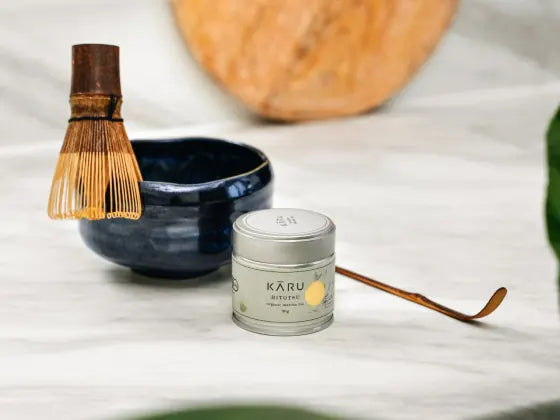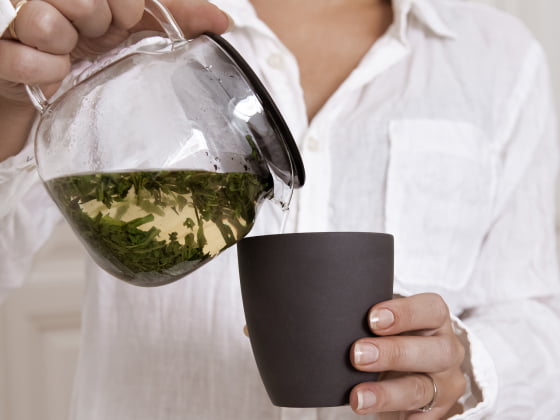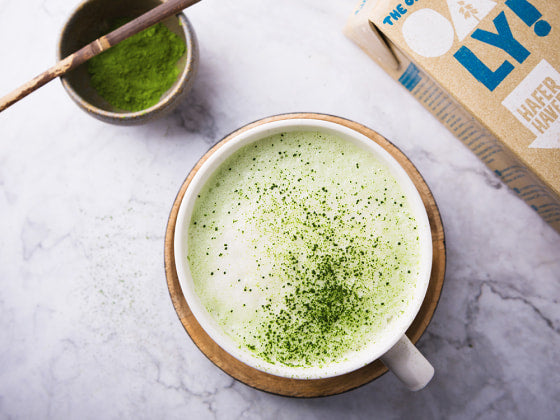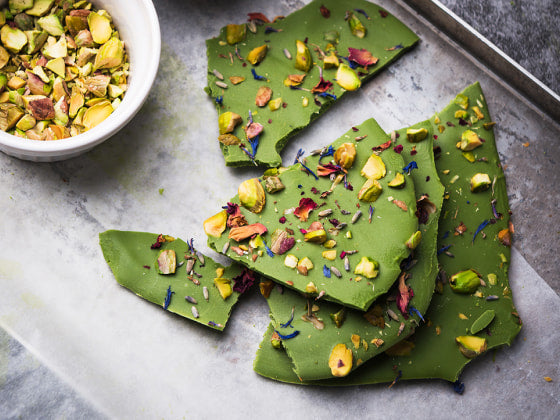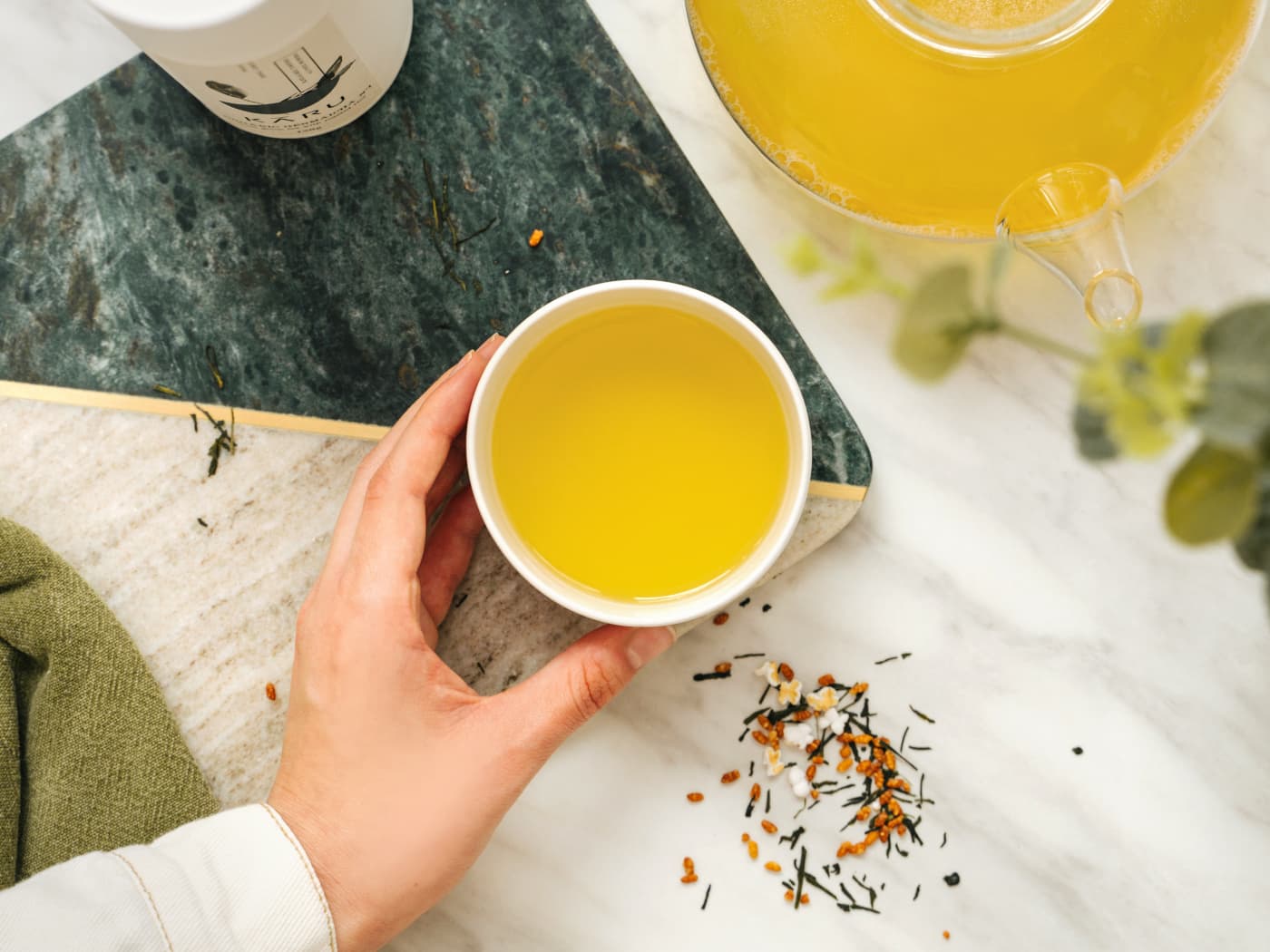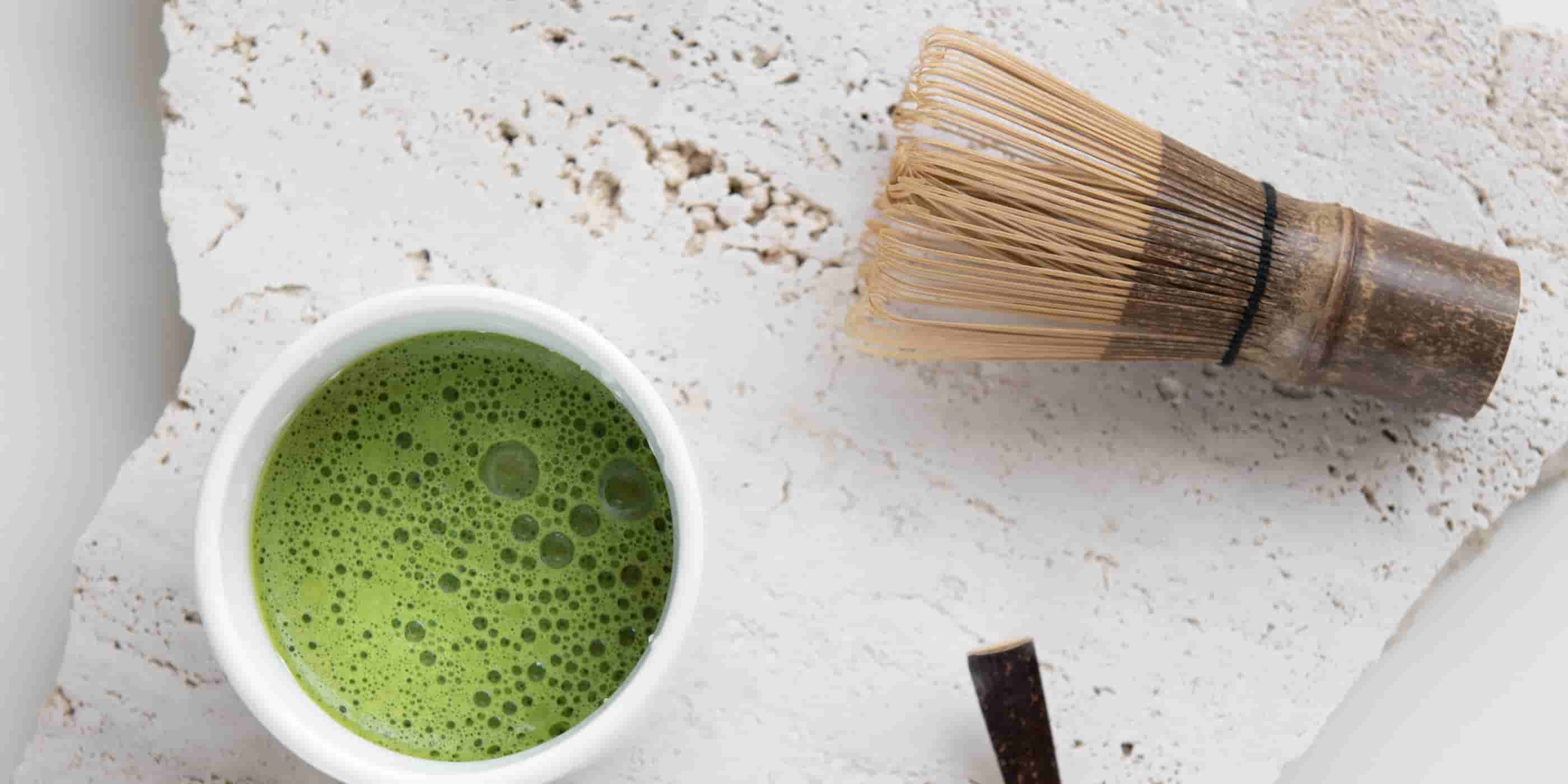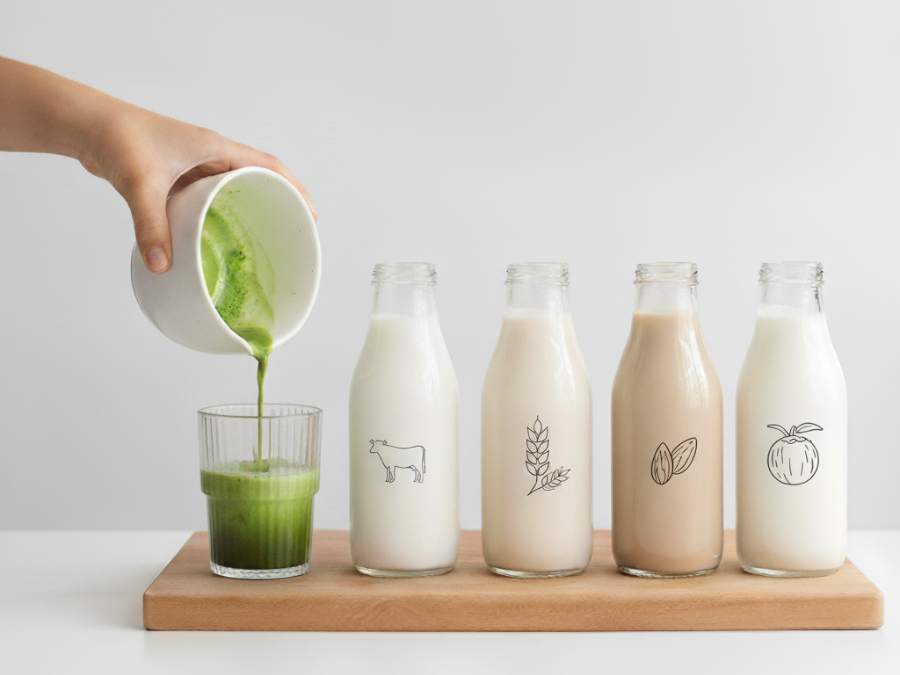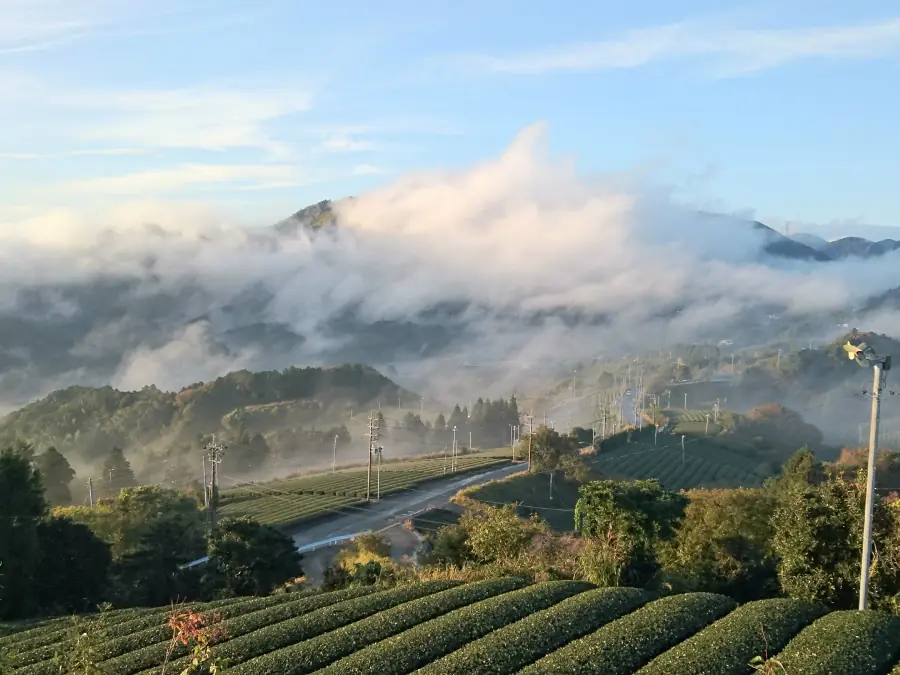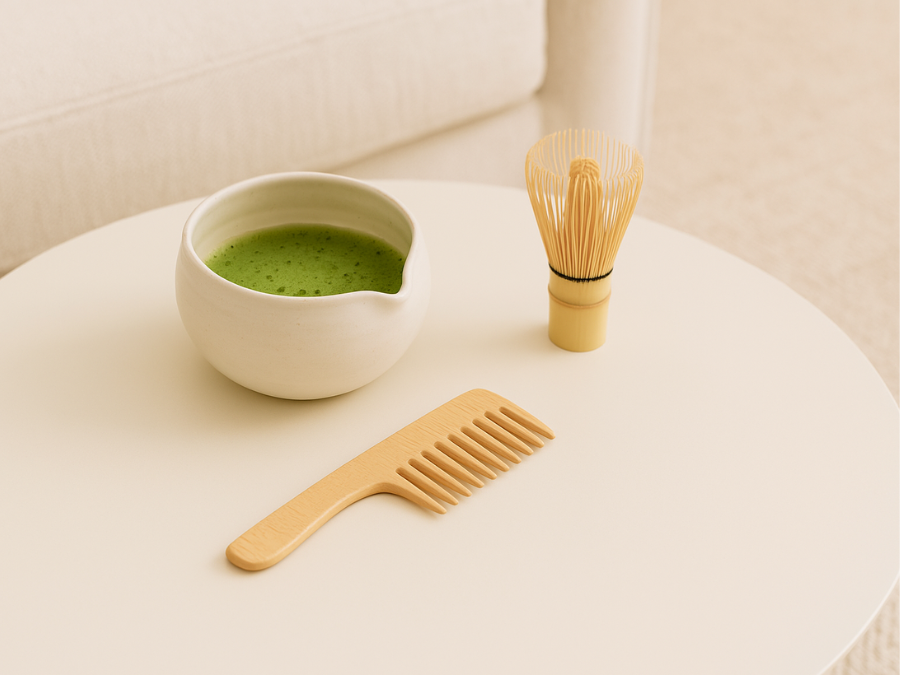What is Genmaicha?
Genmaicha is green tea (mostly sencha or bancha), which is mixed with roasted rice in a 1:1 ratio. The The name is made up of the Japanese words "Genmai" for "brown rice" and "Cha" for tea.
If you ask someone in Japan what their favorite tea is, a common answer is "玄米茶 (Genmaicha)".
It has been drunk in Japan for centuries and is appreciated not only for its malty-sweet taste, but also for its low caffeine content. Strictly speaking, it is actually a "flavored" green tea, as the flavor in the cup is no longer carried by the tea itself. However, this categorization would not do justice to this natural product, which is why we do not use this classification.
Let's take a look at the history of this former "poor people's tea", how it is produced and prepared and what makes the drink so special (Table of contents)
 |
Organic Genmaicha N°01 from KĀRU
Certified organic according to DE-ÖKO-006 and JAS organic, Japan. |
The history of Genmaicha tea
The story of Genmaicha's origins is full of legends. It is said, for example, that the recipe was invented out of necessity by a monk around the 15th century.
According to tradition, this monk ran a small teahousewhere he served free green tea to the needy. However, green tea was expensive, so the monk felt compelled to do so, to somehow stretch his meagre ration of tea leaves. After a few failed attempts, he finally decided to do so, roasted rice with the green tea leaves. The taste of this experiment won over his guests and Genmaicha was born. Stories that give this monk the name "Genmai" and thus want to make him the namesake of this tea seem to be rather European in character and not very credible in view of the meaning (more on this in a moment).

According to other stories, the servant of a samurai had to give his life for the discovery of genmaicha, as he was executed as punishment for dropping roasted rice from his sleeve into his master's cup. Only afterwards is the samurai said to have tasted the "contaminated" tea and found the product to be excellent.
Due to its mixture with inexpensive rice varieties, the tea long had the reputation of being a "poor man's drink". However, it was able to overcome this reputation and has become a popular drink due to its warming, light taste and its low caffeine content caffeine content, it has found its way into Japanese teahouses in particular.

Aroma of Genmaicha - subtle roasted notes and low caffeine content
Genmaicha is also becoming increasingly popular in Europe. It is particularly appreciated for its special aroma, which is characterized by a fine roasted aroma of the rice grains and the delicate fruitiness of the green tea leaves. The roasted taste is reminiscent of freshly prepared popcorn. Overall, the taste can be described as rather light and and palatable characterize.
The effect, especially on the healththe 50% lower caffeine content is particularly noteworthy. If Genmaicha with organic certification is used, the antioxidant properties can be utilized without any pesticides.
Due to its low caffeine content, Genmaicha can also be enjoyed late at night. It is therefore an excellent alternative to the classic sencha, Gyokuro or Kabusecha are a good alternative. By the way, we have explained why green tea is an excellent alternative to coffee. in this article.
Production of Genmaicha - green tea + rice
Genmaicha is usually made with a blend of 50% Sencha or Bancha and 50% roasted rice.
The green tea itself does not undergo any special process; for our Genmaicha N°01, for example, classic organic Sencha from the same growing area as our first-pick Sencha N°01.
The special ingredient is the rice, which also contributes the majority of the name: "Genmai" means "Brown rice". This name often leads to the misconception that brown rice or wholegrain rice or brown rice is used in the production process. However, "brown" in this context stands for the color of the rice or the fact that it is brown. roasted has been roasted.
 Ripe rice ready for harvest |
For our Genmaicha, white organic rice is gently roasted for around 25 minutes until it turns light brown. Some grains burst open like popcorn. The roasted rice is then mixed 1:1 with green tea leaves; other tea farmers vary this ratio slightly.
Preparation of Genmaicha
Genmaicha can be prepared in a similar way to green tea, in particular sencha.
For a cup of Genmaicha organic tea, use 2 teaspoons of Genmaicha in 200 ml of water at a temperature of 70-80°C and leave to infuse for at least 1.5 to 2 minutes. For the best taste, use a traditional Kyusuin which the tea can float freely and the tea leaves can separate from the rice grains and develop freely.
| Traditional kyusu made from natural clay |
Conclusion - you should know Genmaicha
Genmaicha offers a welcome change in the category of green teas and allows tea drinkers to explore new flavors. The "roasted" flavor complex in particular is otherwise mainly known from coffee and can rarely be found in combination with tea (For example with Hojicha) can be enjoyed.
It's best to order our certified organic Genmaicha tea directly. Genmaicha N°01 in your shopping cart and enjoy this special tea at home soon.




